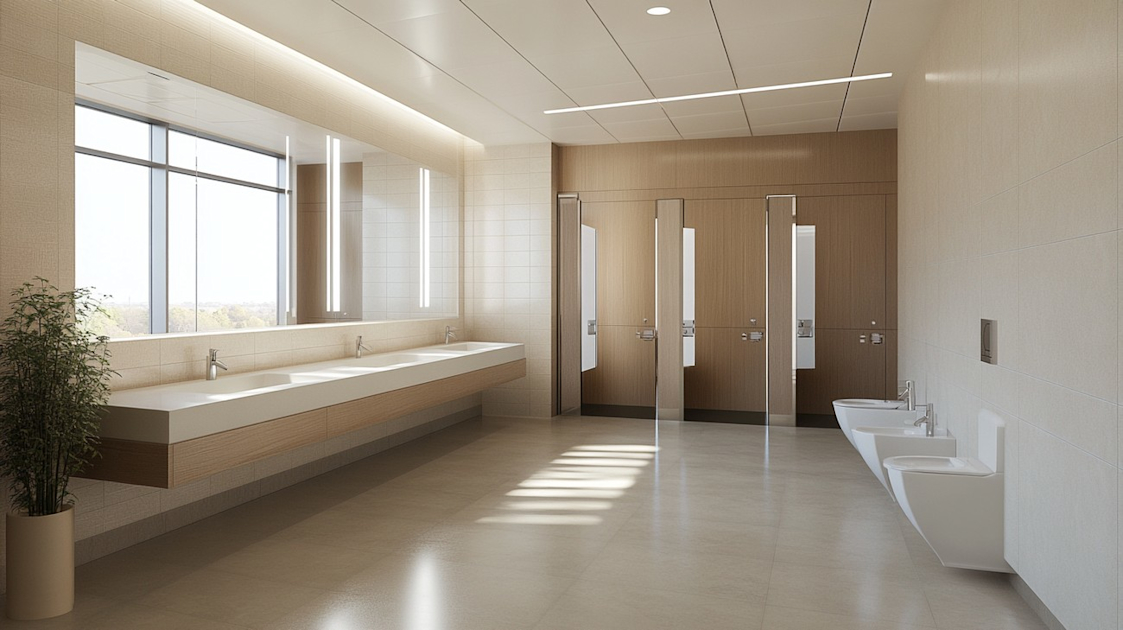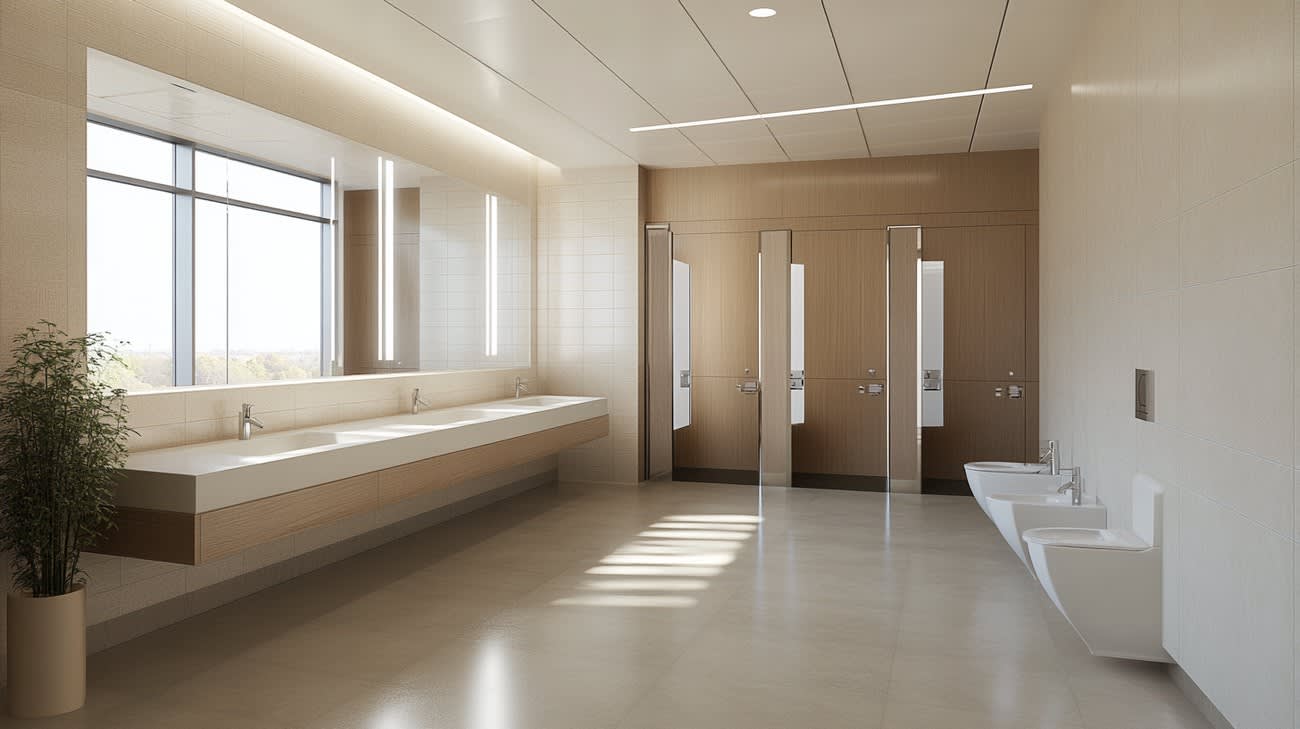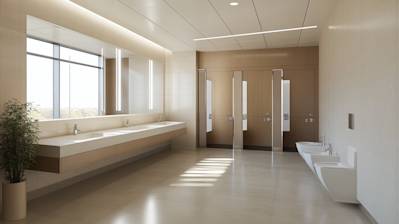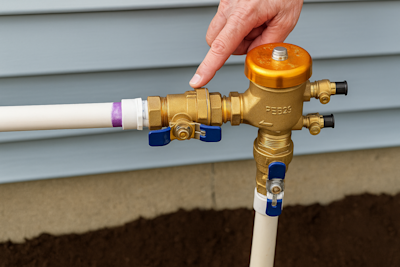If you're a business owner, property manager, or an architect, it's crucial to understand the Americans with Disabilities Act (ADA) bathroom requirements. Ensuring your premises are accessible to all, irrespective of their specific needs, is not only a demonstration of inclusivity but, in many cases, a legal necessity. Below, we'll delve into the ADA bathroom requirements, their importance and how to implement them accurately.
Deciphering the Importance of ADA Bathroom Requirements
For over three decades, the ADA has been a pivotal piece of civil rights legislation preventing discrimination against individuals with disabilities. It mandates the removal of physical barriers that could impede these people from fully participating and accessing public facilities - bathrooms included. Following the set ADA bathroom guidelines creates an inclusive environment for all, promoting diversity and equality.
Analyzing the Fundamental ADA Bathroom Requirements
While remodeling or designing bathrooms, it makes sense to follow ADA guidelines, which ensures accessibility and safety for all. Here's a simplified guide but remember, for a comprehensive list of requirements, it's best to refer to the ADA Standards for Accessible Design document.
Turning Space
Every ADA-compliant bathroom should have enough turning space for a wheelchair. A 360-degree turning radius of about 60 inches is standard. This ample space allows room for movement, enhancing accessibility for individuals who use mechanical support or wheelchairs to move around.
Bathroom Sink and Countertops
The height of the ADA bathroom sink and countertops should be about 34 inches high at their highest point, providing easier access to people who are wheelchair-bound or have mobility issues. The sink area should also have sufficient knee and toe clearance.
Toilet Seats
For the toilet seats, the ADA guidelines recommend a height between 17 to 19 inches from the floor. This height is considered ideal for people with disabilities, allowing them to use the facility without extra assistance.
Grab Bars
Installing grab bars is another critical ADA requirement. It's recommended to fix these bars mostly near the toilet and shower areas, where the user may need additional support.
Key ADA Requirements for Showers and Bathtubs
ADA bathroom requirements also extend to showers and bathtubs, ensuring they’re accessible and safe for all users.
Transfer Showers: These are showers designed specifically for people using wheelchairs. Ideally, transfer showers should be 36 inches by 36 inches with a seat on one side, allowing an individual to transfer from a wheelchair to the shower seat.
Roll-In Showers: As the name implies, roll-in showers allow people in wheelchairs to roll right in. These showers should be at least 30 inches by 60 inches and should not have a curb.
Bathtubs: ADA-compliant bathtubs must be fitted with permanent seats, grab bars, a handheld showerhead, and easy-to-operate control mechanisms.
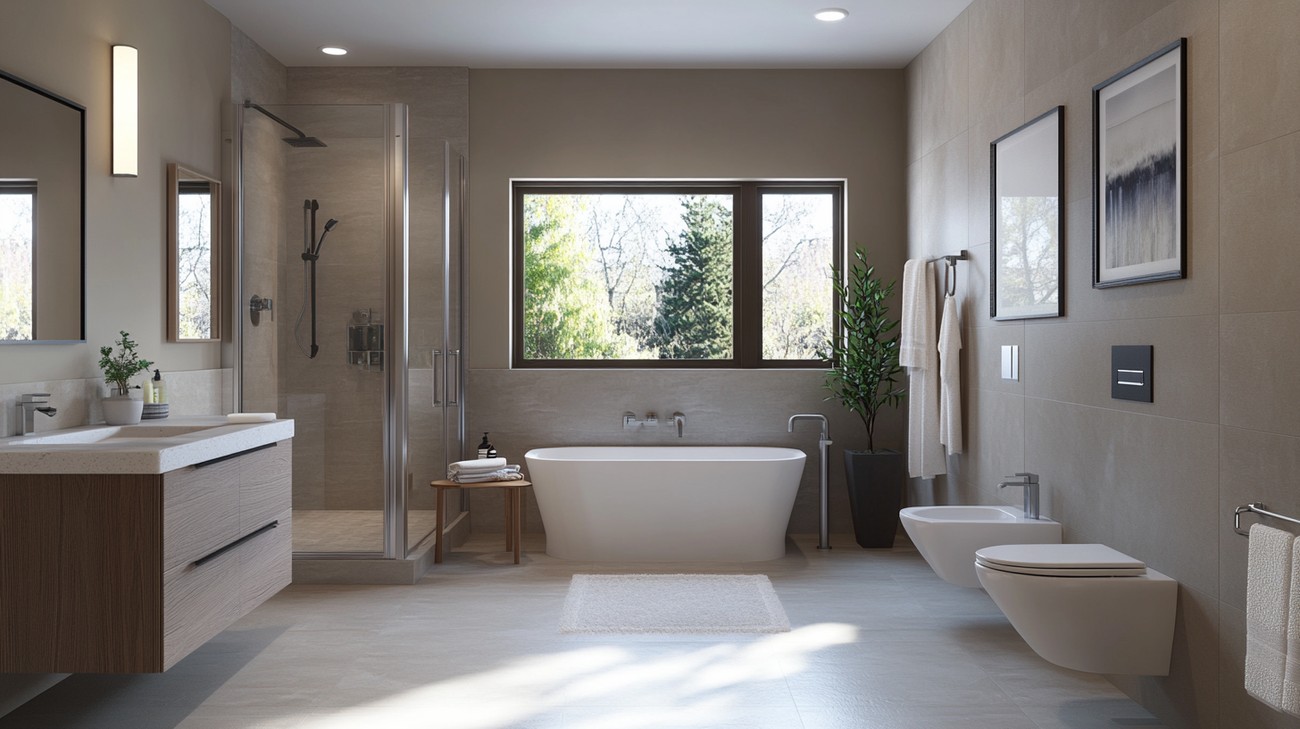
Frequently Asked Questions about Ada Bathroom Requirements
Why are ADA bathroom requirements crucial?
ADA bathroom requirements are fundamentally crucial for creating an inclusive society. These standards are put in place to ensure that people with disabilities can use bathroom facilities without any barriers, promoting equity and dignity.
Who are ADA bathroom requirements designed for?
These requirements mainly aim to accommodate people with disabilities. They cover a wide array of disabilities — physical, sensory, and cognitive. However, these designs also turn out to be useful to a larger segment of the population, such as elderly people, pregnant women, and parents with strollers.
What businesses need to adhere to ADA bathroom requirements?
ADA regulations apply to both public and private entities. If your business falls under either category and you provide goods or services to the public, you need to adhere to ADA bathroom requirements. They apply to all businesses, regardless of their size or the age of the building.
What are the key elements to consider in ADA bathroom requirements?
The primary elements in ADA bathroom requirements focus on space, accessibility, and utility. This includes aspects such as door width, floor surfaces, grab bars, faucets, toilets, sinks, and mirrors, among other things. It's important to note that each of these elements comes with its specific measurements and standards.
Are there specifications for doors in ADA bathroom requirements?
Yes, the ADA sets specific standards for doors in bathrooms. For example, doors should provide a clear width of at least 32 inches and have handles that are operational with one hand without tight grasping, pinching, or twisting of the wrist.
How should the toilet be according to ADA bathroom requirements?
For toilets, ADA standards require a 17 to 19 inches measure from the floor to the top of the toilet seat. In addition, the toilets should have a clearance of at least 60 inches to allow wheelchair transfers.
What's the ADA standard for sinks and vanities?
Bathroom sinks or lavatories should provide a knee space of at least 27 inches high, 30 inches wide, and 19 inches deep. The sink shouldn't be mounted higher than 34 inches above the floor.
Are there set rules for faucets under ADA bathroom requirements?
Indeed, there are. Faucets should be operable with one hand and should not require tight grasping, pinching, or wrist twisting. Lever-operated, push-type, and electronically controlled mechanisms are often the most suitable choices.

Pros of ADA Bathroom Requirements
Encourages Accessibility and Inclusivity
ADA bathroom requirements are instrumental in making public places more accessible and inclusive. The incorporation of grab bars, wider doorways, accessible toilets, and sinks, and appropriate floor spacing ensure that individuals with physical disabilities can use the restrooms comfortably and safely. This fosters dignity and critical human rights provisions for disabled individuals.
Promotes Equality
ADA restroom regulations help to bridge social disparities by ensuring those with disabilities have equal access to basic amenities. By ensuring that all bathrooms are accessible, it ensures equal opportunity for everyone, regardless of their physical abilities.
Aids in the Safety of Users
These regulations are extensively drawn up to provide security to bathroom users, especially those with mobility issues. The incorporation of non-slip floors, grab bars, and adequate lighting goes a long way in preventing accidents such as falls which can lead to severe injuries.
Reduces Legal Liability
ADA bathroom requirements also provide legal protection for businesses. By meeting these requirements, businesses can avoid hefty penalties and lawsuits related to non-compliance.
Boosts Business
Strict adherence to ADA bathroom requirements can enhance the reputation of a business. Consumers often favor businesses that show consideration for all its users, and this increased patronage could, in turn, impact the business positively.
Encourages Aging in Place
For private residences, remodeling the bathroom to meet ADA specifications can be a proactive step toward aging-in-place. As we grow older, the risk of falls increases, and the bathroom becomes an increasingly hazardous area. By creating a bathroom that meets the ADA’s accessibility standards, older adults can safely use the facilities, promoting independent living longer into old age.
Cons of ADA Bathroom Requirements
High Installation Costs
The costs associated with renovating or building a bathroom that satisfies the ADA requirements can be quite high. Small businesses may struggle to find the funds needed to make such renovations whilst maintaining their profitability.
Increased Maintenance
Equipment such as automatic doors, alarm systems, and adjustable features may require more regular maintenance and checks to ensure they are in proper working order. This can be time-consuming and financially draining for businesses or establishments.
Takes Up More Space
ADA bathroom requirements dictate specific measurements and spacing for fixtures, which result in larger bathrooms. This might not be a feasible option for all businesses or establishments due to space constraints.
Not Always Required
Not every building or establishment is required to have ADA compliant restrooms. Some structures are exempt from these rules because of their age or historic status. This might result in unnecessary expenses for businesses that choose to make their bathrooms compliant.
Complexity
The requirements for ADA compliance can be complex and confusing. Misinterpretation or ignorance of any one of these can lead to non-compliance, often resulting in fines and penalties.

Myths and Misconceptions about ADA Bathroom Requirements
Myth #1: All Restrooms Must be ADA Compliant Immediately
Misconception
One common misconception is that any restroom in a public or commercial building must immediately be brought up to ADA compliance. This misconception can cause unnecessary stress and confusion for business owners.
The truth
In reality, while ADA bathroom requirements are important, there is a strong understanding of the financial implications involved in making extensive changes to existing structures. Typically, alteration to achieve compliance is only demanded when it is readily achievable and can be done without much difficulty or expense. All new buildings or significantly renovated structures must be constructed to meet ADA standards immediately.
Myth #2: ADA Requirements Only Apply to Public Restrooms
Misconception
Another common myth is that ADA bathroom requirements only apply to public restrooms. Many assume that only government or commercial buildings have to worry about ADA compliance.
The truth
The truth is that ADA regulations do not strictly apply only to public restrooms. Although private employers with under 15 employees aren't covered, larger workplaces are required by federal law to make reasonable accommodations for their disabled employees. This certainly includes building accessible bathrooms if none exist.
Myth #3: The Size of the Bathroom determines the Degree of Accessibility Required
Misconception
Many people believe that the size of a restroom determines how accessible it needs to be. Some view smaller bathrooms as exempt from the stringent expectations of ADA compliance.
The truth
However, the square footage of a restroom does not dictate its required degree of accessibility. Regardless of the bathroom's size, the basic principle of providing equal access to all people should be preserved. While the size of the restroom can impact some aspects of the design parameters, it does not excuse a lack of accommodations that could be made.
Myth #4: Grab Bars Are the Only Significant ADA Requirement
Misconception
A prevalent misconception is that simply installing grab bars in a restroom suffices for being ADA compliant. Many business owners consider this as the only requirement they need to fulfill.
The truth
While grab bars are a crucial element of an ADA-compliant restroom, they are far from being the only requirement. According to ADA, bathroom necessities include but are not limited to: a 60-inch turning radius for a wheelchair, a sink with knee clearance, and a toilet with a seat hinging between 17 and 19 inches from the ground. Door handles, dispensers and mirrors should also be easily accessible.
Myth #5: ADA Guidelines Don't Change
Misconception
Many building and business owners tend to hold on to the belief that ADA guidelines remain static once they have been set.
The truth
In reality, the ADA guidelines are dynamic, and amendments do occur over time. ADA standards were changed significantly in 2010, for example. Therefore, it's crucial to keep abreast of any changes to be in compliance with the latest ADA requirements.
The various myths and misconceptions about ADA bathroom requirements can often lead to misunderstanding and non-compliance. It’s important to study the actual requirements, consult with professionals, and consider the regulations in their entirety instead of adopting a partial understanding.
Summary
Sure, ADA bathroom requirements may seem intricate but they are indispensable for ensuring the comfort and safety of individuals with disabilities. These requirements are designed to allow easy access and use of the bathroom facilities for everyone. From the specific measurements for toilet and sink heights, the inclusion of grab bars and unobstructed floor space, to the clear provision for wheelchair turnarounds, ADA bathroom requirements encompass comprehensive considerations that go far beyond just compliance.
ADA bathroom requirements provide clear guidelines, but they are also flexible enough to cater to different situations and specific needs. Adaptability is key, as is keeping in mind the human aspect. Remember, the overall aim is to be inclusive and to make sure that the bathroom experience is as comfortable and easy for people with disabilities as it is for anyone else. So, while getting into the technical details, don't lose sight of the primary intention - to foster a society that celebrates diversity and equality.
Lastly, remember, following ADA bathroom requirements is not just about complying with laws and avoiding penalties. It's about recognizing the need for inclusivity in all aspects of life, and more importantly, it’s about turning this recognition into action. By designing bathrooms that meet ADA standards, businesses and public places can ensure that they are accessible and welcoming to all, thereby fostering a more inclusive society. It's a small step, but it can make a big difference in someone's life.
About KYPD Plumbing
KYPD Plumbing is your trusty, locally operated plumbing company in Lexington, KY. With years of professional experience under our belt, we take pride in providing comprehensive plumbing solutions to our valued clients in and around the community. Our team of certified professionals is passionate about ensuring a smooth flow in your homes and businesses by delivering top-notch services, ranging from minor fixes to major installations. With KYPD Plumbing, quality and customer satisfaction take the center stage, making us a preferred choice for folks in Lexington. We're honored to become your go-to guys for all things plumbing-related.
Tags: ADA, bathroom, accessibility requirements,

